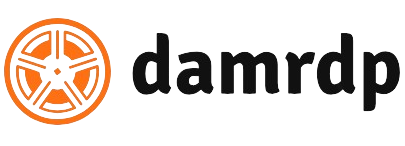That innovation helps us deliver the best solutions in digitalisation, e-mobility, and autonomous driving that will help you transform the future of automotive engineering. And our solution-first and lean method of creation means that we deliver on time and at low cost. The Indonesian automobile market was dominated by Japanese car brands, and most of these brands, such as Toyota, Isuzu and Daihatsu, were solely distributed and/or imported by PT. Toyota was the leading passenger vehicle brand in Indonesia with car sales over 295 thousand units in 2021.
Moreover, these subsidized fuel price reforms also caused accelerated inflation due to second-round effects (hence curbing Indonesians’ purchasing power further) as prices of various products rose due to higher transportation costs. Lastly, the weak rupiah (which had been weakening since mid-2013 amid the US taper tantrum) made imports more expensive. Given that many car components still need to be imported hence raising production costs for Indonesian car manufacturers, price tags on cars became more expensive. However, due to fierce competition in the domestic car market not always have manufacturers and retailers been able to pass these costs on to end-users. The automotive revenue pool will significantly increase and diversify toward on-demand mobility services and data-driven services.
Firstly, Indonesia still has a very low per capita car ownership ratio implying there is enormous scope for growth as there will be many first-time car buyers among Indonesia’s rapidly rising middle class. Secondly, the popular and affordable low-cost green car is expected to boost sales. Thirdly, the Indonesian government is eagerly trying to speed up infrastructure development across the Indonesian nation.
ResearchArm Research Program supports academic and industrial researchers across a wide range of disciplines. BooksArm Education books appeal to students and learners as they progress from novices to experts in Arm-based system design. Arm Blueprint BlogArm executives and influencers bring insights and opinions from the world’s largest compute ecosystem. Learn about Arm technology directly from the experts, with face-to-face, virtual classroom and online training options. Get the help you need, when you need it, with our range of support and training options. Developer CommunityLearn more, and ask and answer questions on the self-service Arm Community.
- The number of electric and hybrid electric vehicles on the road is also set to grow at a rapid rate.
- We help automotive companies to drive efficiencies, unlock new value, enhance the customer experience and create new business models.
- In another game-changing development, software competence is increasingly becoming one of the most important differentiating factors for the industry, for various domain areas, including ADAS/active safety, connectivity, and infotainment.
- We deliver the technology customers want, harnessing the power of data analytics and integrated engineering to build the mechanisms that ensure seamless end-to-end innovation quickly and efficiently.
General Motors and SAIC Motor, both have two joint ventures in SAIC-GM and SAIC-GM-Wuling. Volkswagen Group holds a 37.73% stake in Scania (68.6% voting rights), a 53.7% stake in MAN SE (55.9% voting rights), Volkswagen is integrating Scania, MAN and its own truck division into one division. Renault and Nissan Motors have an alliance (Renault-Nissan Alliance) involving two global companies linked by cross-shareholding, with Renault holding 43.4% of Nissan shares, and Nissan holding 15% of (non-voting) Renault shares. Geely Holding Group holds an 8.3% stake and a 15.9% exercisable voting rights in Volvo.
Tools
Product Longevity Datasheet Demoboard Buy AS8510 The AS8510 data acquisition front-e … Ams automotive angle sensors are widely used for sensing the angle of the accelerator and brake pedals, and the position of gear shifters and chassis. From prime-quality light emitters and optical components to micro-modules, light sensors, ICs and related software. The Automotive Working Group is coordinating with other W3C standards groups and related industry standards bodies, including ISO, Genivi, and others to ensure we leverage one another’s efforts and minimize overlap. Shared information relies most fundamentally on a common description of the underlying data itself. To that end, the W3C Automotive working group is specifying a common data model for vehicle signals.
MAN SE and UzAvtosanoat have a joint venture called MAN Auto-Uzbekistan, UzAvtosanoat owns 51% and MAN SE owns 49%. Mahindra & Mahindra and Navistar International have a joint venture called Mahindra Trucks and Buses Limited. Isuzu, Sollers JSC, and Imperial Sojitz have a joint venture called Sollers-Isuzu, Sollers JSC owns 66%, Isuzu owns 29%, and Imperial Sojitz owns 5%. Hyundai Motor Company and Kibar Holding has a joint venture called Hyundai Assan Otomotiv, Hyundai owns 70% and Kibar Holding owns 30%. General Motors, AvtoVAZ, and EBRD have a joint venture called GM-AvtoVAZ, Both GM and AvtoVAZ owns 41.61% and EBRD owns 16.76%.
Company
General Motors and UzAvtosanoat have a joint venture called GM Uzbekistan, UzAvtosanoat owns 75% and General Motors owns 25%. Ford and Lio Ho Group have a joint venture called Ford Lio Ho, Ford owns 70% and Lio Ho Group owns 30%. Ford and Navistar International have a joint venture called Blue Diamond Truck. Navistar International and JAC has a joint venture called Anhui Jianghuai Navistar.
New technologies are transforming the automotive industry, with innovation redefining what it means to drive or be driven. With AI, compute, graphics, and connectivity at the forefront, the entire experience is being transformed, having a significant impact on how we interact with our favourite vehicles. Accelerate development with best practices and tools that are compliant with automotive industry standards. Rapidly develop and deliver high quality offerings that are price-competitive and gain transparency across the entire product lifecycle for all stakeholders. Per 2017 Indonesia’s total installed car production capacity stands at 2.2 million units per year.
